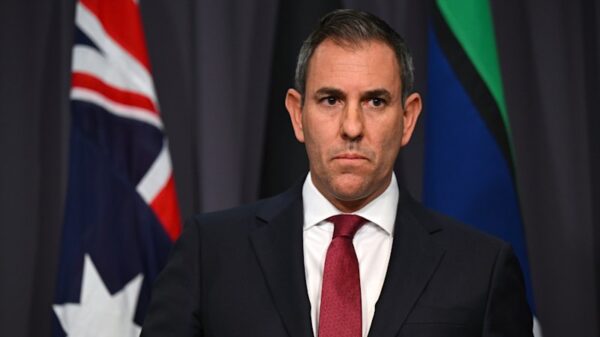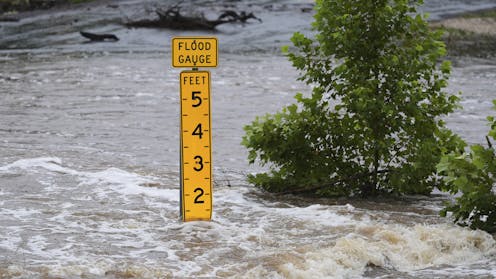Flash floods can strike unexpectedly, as demonstrated by the recent event on the Guadalupe River in Texas on July 4, 2025. Despite advancements in flood prediction models and various warning systems, effectively protecting communities from these dangers hinges on preparedness and public awareness. Central to this effort is understanding how individuals interpret and respond to risk information and warnings.
Research conducted by experts in emergency communication highlights that simply disseminating technical data does not suffice to convey danger effectively. One of the researchers, Keri K. Stephens, has led investigations into flood risk communication. Findings indicate that individuals who have previously experienced flooding tend to have a greater awareness of associated risks. In contrast, those without such experiences often lack understanding of different flood scenarios, such as storm surges and flash floods.
The Importance of Tailored Messaging
While first responders participate in critical training exercises to enhance their readiness, there are limited instances of entire communities engaging in similar drills. The effectiveness of flood risk communication messages varies significantly, and it is crucial for these messages to reach the intended audience. Collaborating with the Texas Water Development Board, Keri’s team developed resources to help local flood officials prioritize flood hazard information for their communities.
A widely recognized message, “Turn Around Don’t Drown,” may not resonate universally. Recently, the team tested alternatives like “Keep Your Car High and Dry,” which specifically appeals to younger adults who may feel invincible but wish to protect their vehicles. This shift highlights the importance of understanding how recipients interpret information and make decisions.
Interviews with community members often reveal a common sentiment: “Another flash flood warning. We get these all the time. It’s never about flooding where I am.” This reflects a significant challenge in flood communication. Different individuals interpret flood warnings based on proximity and personal experience. Some associate warnings with technical monitoring systems, while others rely on mobile alerts or local sirens.
Integrating Technology and Community Networks
Beyond formal warning systems, communities often rely on informal networks for communication. Emergency managers may coordinate with local businesses to ensure someone is monitoring alerts from the National Weather Service. This human-centered approach reinforces the delivery of critical messages, especially in scenarios where technological infrastructure may fail due to power outages or cell tower issues.
Effective warning messages should include five essential components: a clear hazard description, location-specific information, actionable guidance, timing cues, and a credible source. The Federal Emergency Management Agency (FEMA) supports authorities through the Integrated Public Alert and Warning System (IPAWS), which aids in rapidly drafting effective messages. Although IPAWS offers powerful capabilities, it has limitations; not all emergency managers are trained to utilize it effectively, and messages may inadvertently reach unintended areas.
Community opt-in systems can enhance communication by allowing residents to receive targeted notifications. However, these systems face challenges, such as ensuring residents are aware of their existence and willing to share personal contact information. Social media platforms are increasingly employed by emergency managers to disseminate updates, but they primarily engage specific demographics and do not guarantee consistent outreach.
To combat warning fatigue—a phenomenon where individuals become desensitized due to frequent alerts—emergency professionals and researchers emphasize the importance of redundancy through multiple communication channels. Studies indicate that repeated warnings foster a sense of urgency, and interpersonal communication can be particularly effective. As former Natural Hazards Center Director Dennis Mileti noted, the swiftest form of communication can often come from personal connections: “The wireless emergency alerts system is fast. Mama is faster.”
The challenge remains to tailor emergency alerts to the unique needs and conditions of local communities, ensuring that messages are relevant and engaging.
Addressing Warning Fatigue and Future Research
Professionals from the National Weather Service, FEMA, and the Federal Communications Commission are increasingly concerned about warning fatigue, which can result in individuals tuning out important alerts. However, empirical data on how and when this fatigue occurs, or its subsequent effects, remains limited.
This situation creates a complex dilemma; officials must warn at-risk populations, yet excessive warnings might desensitize recipients. Clarifying the distinction between warnings relevant to immediate areas and those that do not apply is essential, particularly when individuals might inadvertently drive into flooded zones.
To enhance emergency communication, it is crucial to craft messages that resonate with specific audiences and establish community networks that complement technological systems. Ongoing research aims to refine these strategies both in the United States and internationally. Applying behavioral insights throughout all levels of communication systems is vital, ensuring comprehensive evaluation from threat identification to community response.
In conclusion, while technology plays a supportive role in decision-making, it cannot replace the human element in emergency responses. Effective communication strategies must evolve to prioritize clarity, relevance, and community engagement.
Research by Keri K. Stephens and Hamilton Bean has received funding from the Texas Water Development Board, Texas General Land Office, the National Science Foundation, the U.S. Department of Homeland Security, and the National Oceanic and Atmospheric Administration. The findings presented are peer-reviewed, reflecting the authors’ opinions rather than those of the funding organizations.



























































